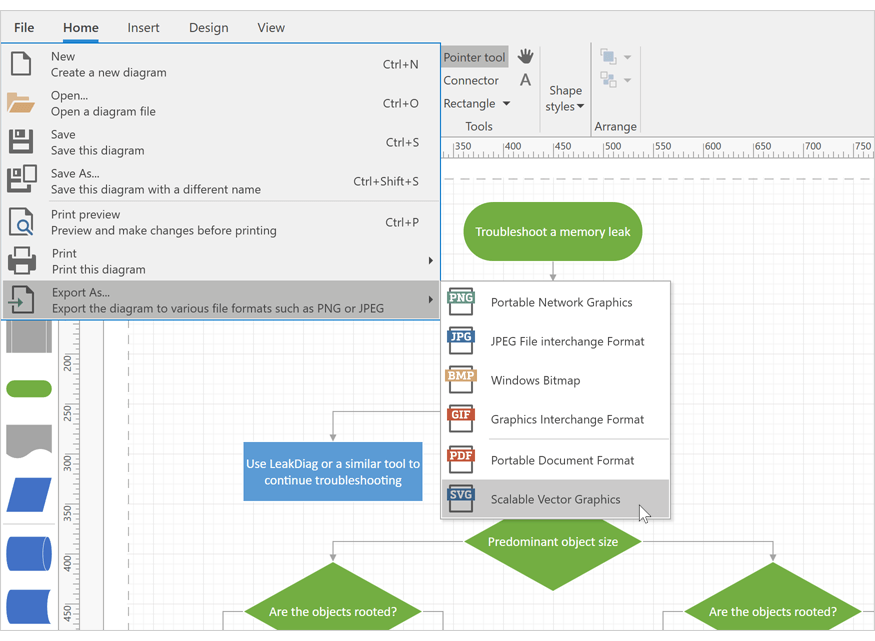可以将文章内容翻译成中文,广告屏蔽插件可能会导致该功能失效(如失效,请关闭广告屏蔽插件后再试):
问题:
I want a my app can go to a first view controller when every time users want it.
So I want to create a function to dismiss all the view controllers, regardless of whether it is pushed in navigation controllers or presented modally or opened anything methods.
I tried various ways, but I failed to dismiss all the view controllers certainly.
Is there an easy way?
回答1:
Try This :
self.view.window?.rootViewController?.dismiss(animated: true, completion: nil)
it should dismiss all view controllers above the root view controller.
If that doesn't work than you can manually do that by running a while loop like this.
func dismissViewControllers() {
guard let vc = self.presentingViewController else { return }
while (vc.presentingViewController != nil) {
vc.dismiss(animated: true, completion: nil)
}
}
It would dismiss all viewControllers until it has a presentingController.
Edit : if you want to dismiss/pop pushed ViewControllers you can use
self.navigationController?.popToRootViewController(animated: true)
Hope it helps.
回答2:
If you are using Navigation you can use first one
or if you are presenting modally you can second one:
For Navigation
self.navigationController?.popToRootViewController(animated: true)
For Presenting modally
self.view.window!.rootViewController?.dismissViewControllerAnimated(false, completion: nil)
回答3:
Simply ask your rootViewController to dismiss any ViewController if presenting.
if let appDelegate = UIApplication.shared.delegate as? AppDelegate {
appDelegate.window?.rootViewController?.dismiss(animated: true, completion: nil)
(appDelegate.window?.rootViewController as? UINavigationController)?.popToRootViewController(animated: true)
}
回答4:
Hello everyone here is the answer for Swift-4.
To go back to root view controller, you can simply call a line of code and your work will be done.
self.view.window?.rootViewController?.dismiss(animated: true, completion: nil)
And if you have the splash screen and after that the login screen and you want to go to login screen you can simply append presentedviewcontroller in the above code.
self.view.window?.rootViewController?.presentedViewController!.dismiss(animated: true, completion: nil)
回答5:
Use this code for dismiss presented viewcontrollers and pop to navigation rootviewcontroller swift 4
// MARK:- Dismiss and Pop ViewControllers
func dismissPopAllViewViewControllers() {
if let appDelegate = UIApplication.shared.delegate as? AppDelegate {
appDelegate.window?.rootViewController?.dismiss(animated: true, completion: nil)
(appDelegate.window?.rootViewController as? UINavigationController)?.popToRootViewController(animated: true)
}
}
回答6:
Pops all the view controllers on the stack except the root view controller and updates the display.
func popToRootViewController(animated: Bool)
But if you want to go to specific controller just use the below function.
func popToViewController(UIViewController, animated: Bool)
Pops view controllers until the specified view controller is at the top of the navigation stack.
回答7:
Create an Unwind Segue (You can find it at https://developer.apple.com/library/archive/featuredarticles/ViewControllerPGforiPhoneOS/UsingSegues.html copyright of Apple Inc.)
Unwind segues let you dismiss view controllers that have been
presented. You create unwind segues in Interface Builder by linking a
button or other suitable object to the Exit object of the current view
controller. When the user taps the button or interacts with the
appropriate object, UIKit searches the view controller hierarchy for
an object capable of handling the unwind segue. It then dismisses the
current view controller and any intermediate view controllers to
reveal the target of the unwind segue.
To create an unwind segue
Choose the view controller that should appear onscreen at the end of an unwind segue.
Define an unwind action method on the view controller you chose.
The Swift syntax for this method is as follows:
@IBAction func myUnwindAction(unwindSegue: UIStoryboardSegue)
The Objective-C syntax for this method is as follows:
- (IBAction)myUnwindAction:(UIStoryboardSegue*)unwindSegue
3. Navigate to the view controller that initiates the unwind action.
Control-click the button (or other object) that should initiate the unwind segue. This element should be in the view controller you want to dismiss.
Drag to the Exit object at the top of the view controller scene.
https://developer.apple.com/library/archive/featuredarticles/ViewControllerPGforiPhoneOS/Art/segue_unwind_linking_2x.png
- Select your unwind action method from the relationship panel.
You must define an unwind action method in one of your view controllers before trying to create the corresponding unwind segue in Interface Builder. The presence of that method is required and tells Interface Builder that there is a valid target for the unwind segue.
回答8:
To achieve what you want, modify your navigation stack, then do popViewController.
let allControllers = NSMutableArray(array: navigationController!.viewControllers)
let vcCount = allControllers.count
for _ in 0 ..< vcCount - 2 {
allControllers.removeObject(at: 1)
}
// now, allControllers[0] is root VC, allControllers[1] is presently displayed VC. write back to nav stack
navigationController!.setViewControllers(allControllers as [AnyObject] as! [UIViewController], animated: false)
// then pop root VC
navigationController!.popViewController(animated: true)
See this for the way to further manipulate the navigation stack. If your topmost VC is modal, dismiss it first before the code above.
回答9:
func dismiss_all(view: UIView){
view.window!.rootViewController?.dismiss(animated: true, completion: nil)
}
回答10:
May be what you are looking for is unwind segue.
Unwind segues give you a way to "unwind" the navigation stack back
through push, modal, popover, and other types of segues. You use
unwind segues to "go back" one or more steps in your navigation
hierarchy.
Link to documentation:
https://developer.apple.com/library/archive/technotes/tn2298/_index.html
回答11:
In case anyone looking for an Objective-C implementation of the question's answer,
[self.view.window.rootViewController dismissViewControllerAnimated:true completion:nil];
回答12:
The best and prefered way to do this is to create an unwind segue. Just follow this documentation https://developer.apple.com/library/archive/featuredarticles/ViewControllerPGforiPhoneOS/UsingSegues.html. It can de done in code or through the interface builder.

